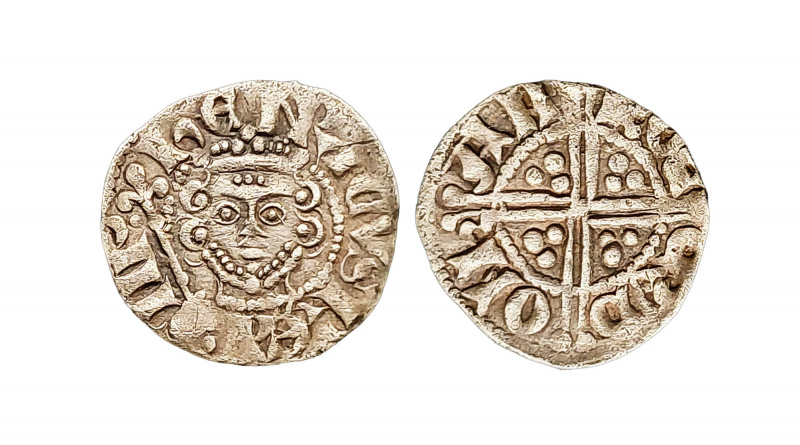Penny of Henry III
Anthony Hopkinson told me that he was out detecting on 15 December and managed to dig through the permafrost to recover the Henry III long cross penny pictured here. He said it is probably the best specimen of its type he has ever found and he asked me to provide details in regard to the class, mint and moneyer.
The obverse has been struck by a die of long cross class 5c3. On the reverse the legend reads ROB ERD [Robert] ON AN. After taking a quick look at the legend I could see that the letter B is reversed, there is something after ON and the letter A is unusually flamboyant. Fairly obviously, the reverse die will have been used at the Canterbury mint but it does not belong to class 5c3. However, that was the starting point for my research.
In 1971 Sotheby & Co. sold half of a hoard that had been found at Colchester in 1969. Amongst a large number of Henry III long cross pennies were roughly 1370 specimens from the Canterbury mint. Several moneyers were represented in this group but in the case Robert the hoard included only six coins. Therefore, Robert is quite a rare moneyer.
After examining the reverse legend more closely I decided the coin must be a mule, with a class 5c3 obverse possibly combined with a class 5d reverse. My research then focused upon that possibility.
The first part of the F. Elmore Jones collection was sold at auction in 1983. Lot 146 contained two Henry III class Vc/Vd Canterbury mules. On the first coin the moneyer was Ion and on the second it was Robert, with a reversed letter B in his name. The latter was illustrated in the sale catalogue but the image wasn’t clear enough for me to say it was a die duplicate. However, I was now pretty certain that Anthony’s coin is a mule combining a class Vc3 obverse die with a class Vd reverse die. The reverse legend will have a letter K ligate with the N of ON. A mint signature of KAN is peculiar to class Vd.
The Elmore-Jones penny turned up again, in lot 435 when Part I of the Jeffrey P. Mass collection was sold in 2004. On this occasion it was accompanied by a Vc/d coin of Henri of London.
In the section on Henry III long cross pennies in English Coins 1180-1551 Lord Stewartby discusses coins of Vc3 and Vd on page 106. He lists mules of Vc3/Vd as being extremely rare.
Valuation
Anthony doesn’t usually ask for valuations on his finds but as this penny was so nice he wondered what it might be worth. The specimen in Fine condition described as being extremely rare in the Elmore Jones auction sold for about £35 in 1983. When it appeared again in 2004, described as being only rare, together with another Vc/d mule it sold for about £20. This highlights the importance of cataloguing. It is vital to include the correct degree of rarity. Specialist collectors will know if a coin is rare or extremely rare but a non-specialist might not.
The coin under discussion is in VF condition and is described by Lord Stewartby as being extremely rare. There is a possibility that it is the finest known specimen of this particular mule, so it would be of great interest to specialist collectors. Leading on from this, if it was offered for sale at auction and properly catalogued there could be competition in a saleroom between prospective buyers. I’d set the pre-sale estimate at £200 to £300, which should be low enough to encourage bidding and the final hammer price might break through the upper limit.
Valuation Service
If you would like your coin identified or valued, please read about my valuation service and contact me

